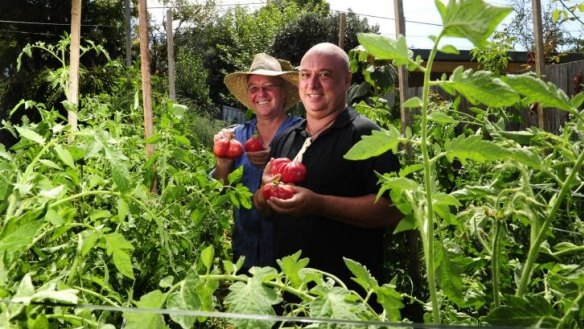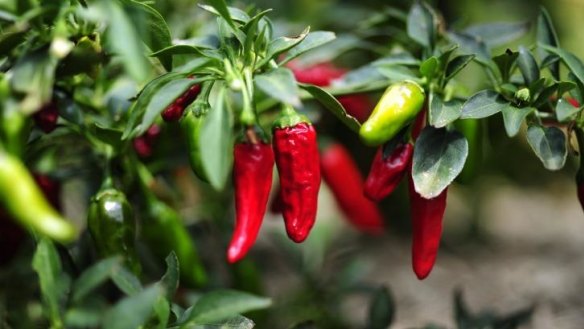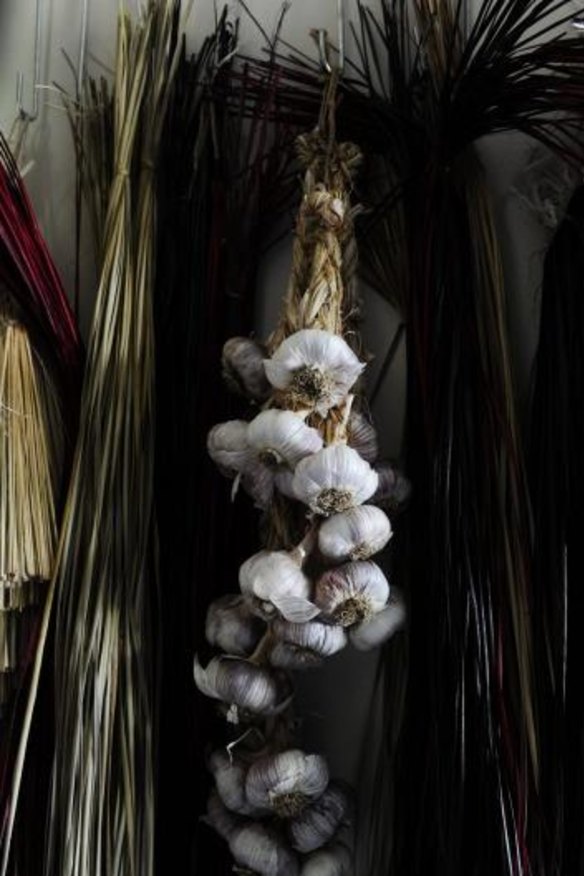How to grow Donkey Balls tomatoes in Canberra

Canberra-bred Scott Burns began a bachelor of applied science in 1987 at what was then the Hawkesbury Agricultural College, studying horticulture, and graduated from the University of Western Sydney, Hawkesbury Campus, in 1990. He worked at two nurseries in the Southern Highlands before returning to Canberra and employment at The Heritage Nursery in Yarralumla in its opening year, 1996. So this is the garden centre's, and Scott's, 20th anniversary.
Two years ago a customer who knew nothing about gardening came to the nursery and asked Michelle Penders, who works at the front counter, and Scott how to go about creating a garden. They taught "the Greek guy, George" how to make compost and prepare the soil and what to plant and the garden was such a huge success that he gave Michelle and Scott a tomato plant each with a long Greek heritage.
The first fruit was a distinctive shape and thus began the reign of the Donkey Balls tomato. Scott saved seed from his first crop last year and plants were raised for spring 2015 and summer. The Heritage Nursery sold about 450 Donkey Balls tomato plants and among people who purchased them there is a recurrent theme, "really strong, pest and disease-free plants", "they have out performed all other varieties in my garden", "heavily laden", "amazing flavour" and "really meaty".

So we were invited to the Narrabundah home garden of Scott Burns and his partner, Dean Bilbee, to see the grove of Donkey Balls. The sunny half of the back garden is devoted to edibles including a long row of prolific dwarf stringless beans, Lebanese cucumbers grown on metal tomato frames so they hang down from the plant and can be easily seen, heirloom Australian butter pumpkins, carrots, beetroot and eggplants. There are four varieties of chillies, Tabasco, Bird's Eye, Sweet Hungarian Yellow and one called Mild Thai Chilli that Dean says was not mild at all.
The plantings are backed by three towering giant sunflowers with seed that attracts parrots daily, and two large compost heaps. People often say to the couple "you are so lucky to have such beautiful soil" and they reply, "Well luck has nothing to do with it. In 2000 the backyard was covered in couch grass and we hand dug the whole yard and created the vegie and ornamental gardens."
Both Dean and Scott believe that while food nourishes the body, flowers feed the soul and all plants need to be well taken care of with healthy nutrients annually. So in spring, mid-summer and autumn, Healthy Earth Fertiliser is thrown around about 100 grams to a square metre. This is a powdered bonemeal-based fertiliser and contains no nitrates and it comes in five-kilogram to 20-kilogram bags.

Scott says it was his grandmother who stimulated his passion for gardening from childhood. She saved flower seeds to sow and took cuttings and let them grow roots on her window sill. While a student at the new Erindale College, Scott knew he wanted to study horticulture and helped set up concepts and plans for the Dairy Flat Road Farm.
Dean and Scott both cook but Dean is the real chef in the household, cooking up a mouth-watering storm in the kitchen with dishes from Indian and Mediterranean cuisine and Australian barbecues. His specialty is a New Zealand hangi of vegetables and meats using a Kiwi Multi Kai, designed and invented in 1998 by Dough Andrews of Whangarei, which the couple took with them on a recent holiday at Mystery Bay. On a coastal walk, Dean found a long, patterned piece of bark on the ground and served fresh prawns and oysters placed in an arc along the length of the bark.
Dean moved to Australia in 2000 from Waiheke Island near Auckland. He is Maori and has been trained in the ancient art of te raranga (Maori weaving with New Zealand flax from the Phormium genus). Throughout the house are magnificent and intricate examples of his work and hanks of the flax hang from doors and bookshelves. In the kitchen and sunroom there are edibles hanging too. Recently strung braids of chillies are drying out and thick garlic plaits are waiting their moment in the kitchen.
After the full moon nearest the autumn equinox in March the guys will be planting garlic to give it plenty of time to develop good leaves and roots. They finish planting before Anzac Day when frost can hit Canberra. They plant Tasmanian purple hard-neck and white soft-neck garlic. The latter stores for a longer period. Garlic is a constant among their autumnal plantings and, in the smallish garden, the Donkey Balls tomato plants had to wait to be planted until all the garlic crop had been harvested.
Susan Parsons is a Canberra writer.